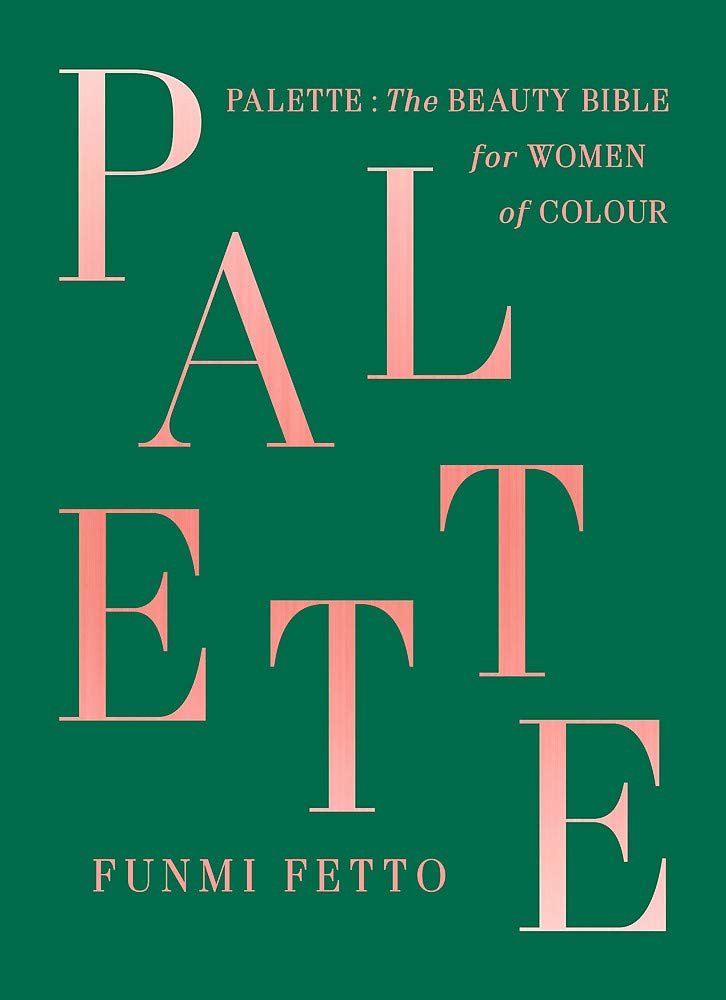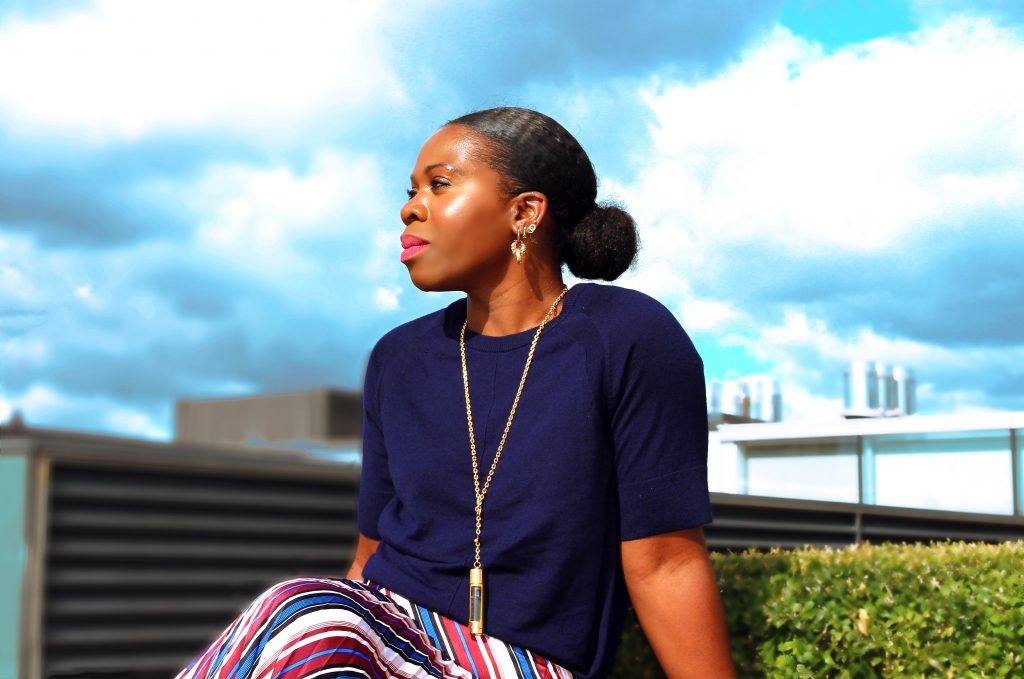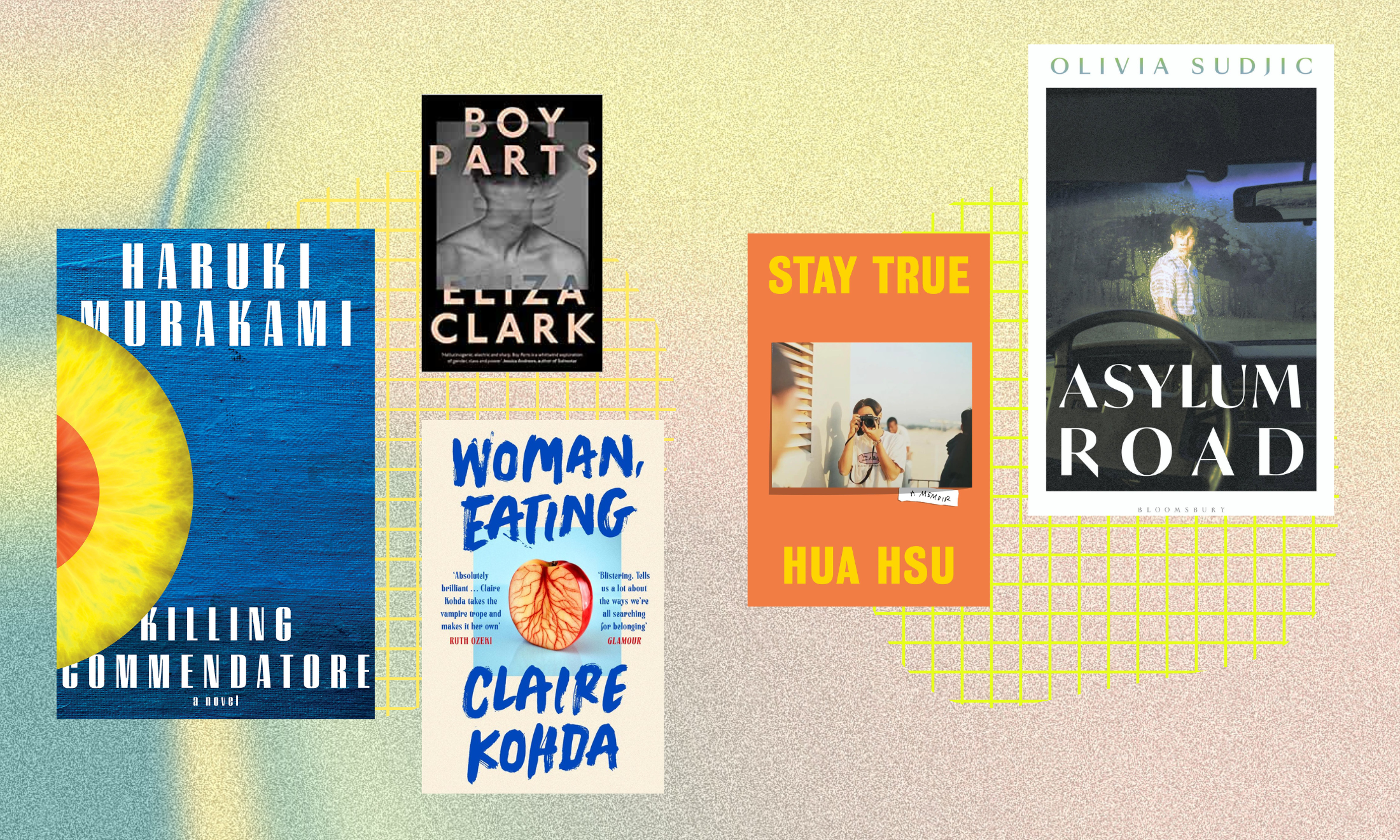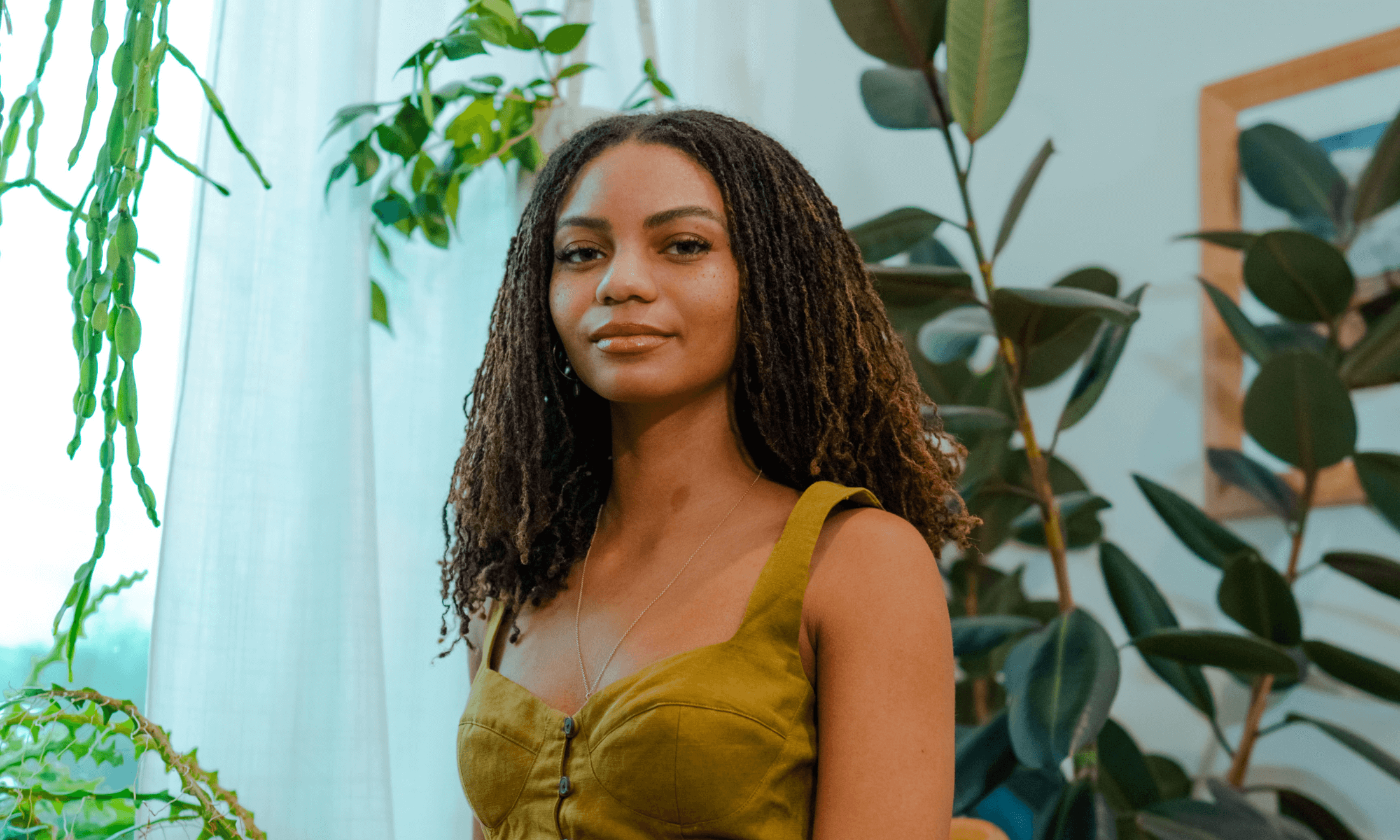
Funmi Fetto is telling the beauty industry to pay attention to women of colour
Oluwaseun Matiluko
08 Oct 2019
Photography by Natalie Jeniffer
I meet up with Funmi Fetto just before the publication day of her debut book, Palette: The Beauty Bible for Women of Colour, in her publisher’s lush office. We were due to meet last week, but Funmi had to jet off unexpectedly to attend a Dior show at Paris Fashion Week, where she was coordinating a beauty Instagram takeover with Leomie Anderson and Nikki Wolff for Glamour magazine. “It was fun,” Funmi explains, “But it was still work.”
In some respects the likelihood of Funmi entering this line of work and living such a fast-paced lifestyle seemed unlikely when she was younger. Although now the executive editor and beauty director at Glamour, she became a single mother at 18 and had ended up doing an accounting and finance degree to prove to her parents that she “can do a serious subject and can be taken seriously”. After working within the industry for a few years she found that she was more interested in the academic side of accounting and finance rather than making it her career. And so, having “always been interested in writing, fashion [and] magazines” she forged a new path, calling up Elle and bagging an internship without even showing them her CV.
In her “heart [she] knew she was doing the right thing” and since then, attributing her success to her strong relationship with God, she’s gone from strength to strength. With her book she takes another courageous step forward, producing one of the first books about beauty directly targeted at women of colour. Palette: The Beauty Bible for Women of Colour, is a reference guide giving advice and recommendations on top skincare, makeup and hair care products.
In her warm, witty and welcoming writing style she evaluates various products she’s tried over the years, explaining the good, the bad and ugly so that readers can make an informed choice on what beauty product to try next. As she explains, “It had to be conversational, it had to be engaging, hopefully, and it had to feel… real. I didn’t want something which just read like a textbook.”

And the book does feel real. She’s not afraid to call out those oil cleansers, for example, which are probably “no different from the vegetable oils [you’d] use to fry plantain”. She really gets to the heart of what advice women of colour actually need when it comes to hair, skin and makeup products. From letting us know which shampoo will help us get away from the dreaded residue build-up some of us get due to braids, to what blushers will show up on dark skin and even what lipsticks will actually be a nude shade for us. This book is really made for us, and in a climate where beauty brands don’t really seem to focus on us that is really significant. When is the last time you saw a book on beauty reference afro hair? In fact, when have you seen any mainstream resource informing on products that could be used for edge control or to combat shrinking?
Many of us trying to style any kind of black hair often look to the internet, to see new products or innovative ways in which to style our hair as unfortunately we cannot go to anyone else, not even our parents. Despite many of our parents “relaxing” our hair when we were growing up, it was only recently, from the internet that many of us learned that the chemicals used in “relaxer” are actually quite toxic. Moreover, it was only this year that many of us learnt from a thread on Twitter that if you use synthetic braiding hair you should first soak it in apple vinegar to prevent itching.
Many of us have had to rely on the advice found in non-black owned hair shops. Because the shop-owners and assistants don’t actually use the products themselves they often have a poor understanding of what will work for us. With Funmi, a black woman, pointing out which products can be used for bantu knots and the importance of hair detanglers, the cultural impact of this book is massive. And having these words in a book, instead of an easily misplaceable thread or video online, means that this resource can truly be a “bible” of sorts. A constant in the transient world of beauty.
And Funmi recognises the importance of her book, going so far as to that this is not a book about beauty per sé but a book about representation. She wanted to send a “message” to the beauty industry to “pay attention” to women of colour. After all, as she writes in her latest column in the Observer, women of colour tend to spend more money on beauty and hair products than white women. In 2015, the British Asian community spent an estimated £1.2 billion on cosmetics and a year later Superdrug released its own research which found that black and Asian women spend on average £137.52 more per year on beauty products due to lack of choice.
“Brands show mainly Caucasian women and so of course, if you’re not Caucasian, and don’t see yourself in it you just assume that ‘oh it’s not for me’”
Funmi Fetto
While more recent statistics on the spending of British black women is not accessible, it is notable that African-American women are estimated to spend nine times more than other minority ethnic groups on beauty and hair care. Of course, this is without even mentioning the spending on beauty in Asia and in Africa, where over six billion people live. Yet some parts of the industry seem very keen to ignore women of colour. As Funmi tells me, “the messaging from the brands show mainly Caucasian women and so of course, if you’re not Caucasian, and don’t see yourself in it you just assume that ‘oh it’s not for me.’”
And indeed many women of colour have approached Funmi throughout her career asking for her product recommendations because, in a market saturated with advertising featuring almost only white women, it’s hard to tell whether certain products will suit more-melanated folks. She wanted to “meet a need” because working in the industry meant that she had this “information at [her] fingertips.” And seeing that there was “no resource anywhere that has a fine edit of products that work for women of colour”, she set out to change that and, with no “pressure from any brands”, her honest guide, filled to the brim with what she describes as “mini-columns on products”, has done just that.
Her book is a very “practical” guide, suited to those just seeking to flick through and see whether any products listed take their fancy and those with a specific beauty product they need advice on. It’s a “delving in and out book,” she says. “I’m all about democracy, I’m all about freedom and I think that you can use it [Palette] in the way that it suits you.”
It should be noted that this book is very much targeted at darker-skinned black women, as she tells me “woman of colour, black woman, I use that phrase quite interchangeably.” This could seem quite controversial, after all in the UK many are moving away from our long tradition of political blackness, and while Asian women, Latinx women and black women are all women of colour, for example the pressures they face are not always the same. There are significant differences between the skin shades, hair textures and cultures of non-black women and black women. However, Funmi does not want to focus on our differences in her book. Whilst a lot of her product recommendations are geared towards black women, because they are the products that she has personally used and so she can only speak from her own experience, she emphasises that all women of colour can take something away from the book.

After all, her intentions in labelling this book as “The Beauty Bible for Women of Colour” is because she wanted to create a book where “if you identify as a woman of colour this book is for you.” Elaborating, she explains that the use of the phrase “women of colour” was because of her cognisance of the experiences of mixed-race women within the black community. “ I know some women who are mixed-race who won’t necessarily say, I’m a black woman but will call themselves a woman of colour because blackness and whiteness is a combination of who they are. But you have other mixed-race women who call themselves black women.” Therefore, her aim with this book was to be as inclusive as possible, she does “not want to exclude anyone.” This book is very much about “bringing everyone together and just normalizing the conversations [about race] , certainly within beauty, so that it’s an equal playing field.”
As a young journalist Funmi had not always wanted to write about race, but she “would find that [she] would be approached to write about certain things just because it’s to do with black people.” Of course, she was proud of being black but she wanted to write about more than just blackness. “We are beyond blackness, there’s so much more to us, we are beyond the colour of our skin and it’s annoying that we’re always having to address it,” she explains. While of course her debut book is very much about the “colour of our skin” and how that often excludes us from beauty conversations, she feels that beauty journalism is in a much better place than it was before, and she can now “talk about race and write certain things that are linked to race, but [she’s] also ‘allowed’ to write about a straightforward beauty story that has nothing at all to do with race.” Thus she can write a book focussed on race and yet write a column in the Observer the next day about hand cream, smokey eyes and sleeping masks without even mentioning it. At this stage of her career, she no longer feels “pigeonholed.”
“I’m all about democracy, I’m all about freedom”
Funmi Fetto
But with Palette it was important for her to narrow in on race and insert women of colour into the conversation. She wants to pursue a career where she’s “instrumental in the conversations we’re having within the beauty industry, what brands are doing within the beauty industry and how that’s speaking to us as black women, as women of colour.” Funmi knows that her book is not timeless, after all she was not able to review every single product in existence in Palette, suggesting that a Palette 2 may be on the cards soon; but with the book coming out in Britain, the US and hopefully soon around the world, she has been able to spark an inclusive conversation. And that, if anything, is part of the legacy that Funmi wants to leave in the world.
“I just want to do good work and I want to bring people along with me as I do the good work so that it’s never just about me, it’s about making a change that affects so many more people, not just in my generation but in generations to come.”










